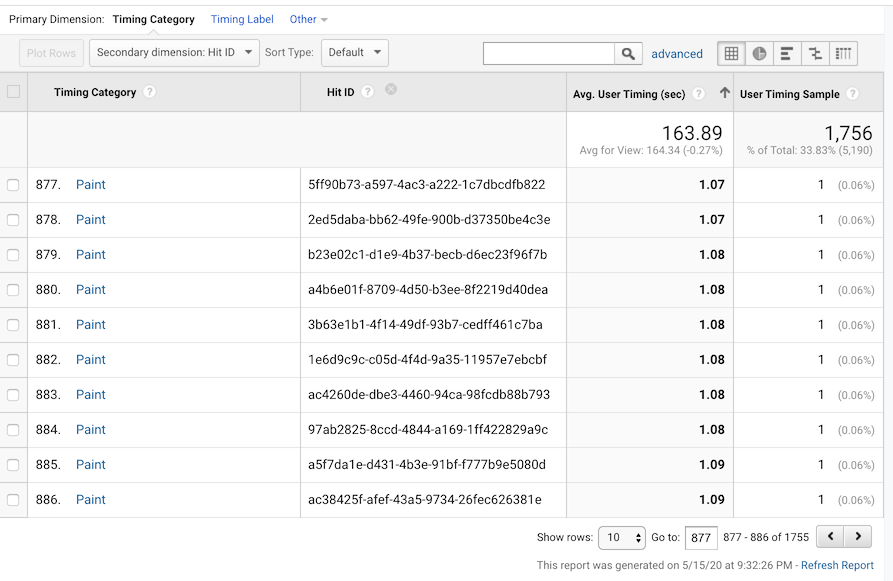Just How to Use Secondary Dimension in Google Analytics for Deeper Insights
Wiki Article
Make The Most Of Coverage Accuracy With Second Measurement in Google Analytics
Recognizing how to make best use of reporting accuracy with secondary dimensions in Google Analytics can substantially boost the deepness of understandings acquired from data analysis. By including second measurements purposefully, marketing professionals can discover concealed patterns and correlations that may not be quickly evident when analyzing primary metrics alone.Recognizing Additional Dimensions in Google Analytics
To improve data analysis and gain much deeper understandings right into customer actions, recognizing additional dimensions in Google Analytics is vital. Additional measurements allow users to segment and additionally study data beyond the key measurement chosen. By incorporating second measurements, analysts can refine their records to expose more detailed information about customer communications on a web site. For circumstances, while the primary dimension may present the overall number of web page views, including a second measurement such as 'source/medium' can offer insights right into where the web traffic originated from. This extra layer of information enables marketing professionals to assess the performance of different marketing projects or networks in driving website traffic to the web site.Moreover, recognizing second dimensions is important for developing more personalized records customized to details company goals. By choosing the appropriate combination of secondary and primary measurements, analysts can discover patterns, fads, and correlations that may or else continue to be hidden. This nuanced method to information evaluation empowers companies to make educated choices based upon a comprehensive understanding of individual habits across different measurements.

Just How to Apply Additional Measurements
When leveraging additional dimensions in Google Analytics, the practical application entails picking certain data parameters to more refine understandings past the main measurement's extent. To apply secondary measurements effectively, start by accessing the report or dataset where you wish to dive deeper right into the data. Remember that secondary dimensions aid offer context and granularity to your primary dimension data, allowing you to extract even more actionable and purposeful understandings from your Google Analytics reports.Leveraging Second Measurements for Insights
Using second measurements in Google Analytics permits an extra detailed analysis of information, using valuable understandings beyond the key dimension's extent. By leveraging additional dimensions, customers can delve much deeper into the efficiency metrics of their site or application, discovering hidden patterns and trends that might not be instantly noticeable when only considering primary measurements.One key advantage of making use of secondary dimensions is the ability to sector and filter information more precisely. This can assist marketers and analysts better understand the habits of certain customer sectors, such as brand-new site visitors versus returning site visitors, or traffic originating from different geographic locations.
In addition, second measurements make it possible for users to compare and contrast different data points within the exact same report, supplying a more holistic view of performance (Secondary Dimension in Google Analytics). For example, combining view website the main dimension of landing web pages with second measurements like demographics or tools can disclose which web pages are most efficient in engaging users on various tools or from various market teams.
Basically, leveraging additional dimensions in Google Analytics empowers customers to remove richer understandings from their information, causing more informed decision-making and inevitably, enhanced performance.
Best Practices for Second Dimensions
When evaluating data in Google Analytics, including additional measurements successfully improves the deepness of understandings originated from the primary metrics. To make one of the most out of additional measurements, it is crucial to stick to best techniques that make sure accurate and purposeful reporting. It is essential to pick additional dimensions that straighten with the primary statistics you are evaluating. Choosing pertinent secondary measurements assists in providing context and a clearer understanding of the data being examined.Furthermore, it read here is suggested to restrict the variety of second dimensions made use of in a single record to stay clear of overwhelming the analysis with way too much information. Focusing on a few key additional dimensions at once can lead to more focused and workable insights. Additionally, think about trying out with various mixes of second and key measurements to reveal one-of-a-kind trends and patterns that may not appear when checking out the information in seclusion.
Advanced Analysis Methods With Additional Dimensions
Checking out elaborate data relationships with the tactical application of second dimensions can unveil nuanced understandings that raise the depth of evaluation in Google Analytics. By combining second dimensions with key information sets, sophisticated evaluation techniques can be used to draw out valuable details.In addition, additional dimensions can enhance the evaluation of conversion paths by giving additional context. Recognizing the different touchpoints a customer engages with before transforming can be vital in optimizing the client trip - Secondary Dimension in Google Analytics. By utilizing second dimensions to look into specifics such as traffic sources or gadgets used, marketing experts can customize strategies to target high-converting channels anchor efficiently
Conclusion

To enhance data evaluation and gain deeper insights into customer behavior, recognizing second dimensions in Google Analytics is important - Secondary Dimension in Google Analytics. Additional measurements enable customers to segment and even more explore information past the key measurement selected. While the primary measurement might present the complete number of web page sights, adding a secondary dimension such as 'source/medium' can supply understandings right into where the traffic originated from.When leveraging secondary dimensions in Google Analytics, the useful application includes choosing details data parameters to further refine insights beyond the primary measurement's range. Bear in mind that secondary dimensions help provide context and granularity to your primary measurement information, allowing you to remove even more purposeful and workable understandings from your Google Analytics records
Report this wiki page